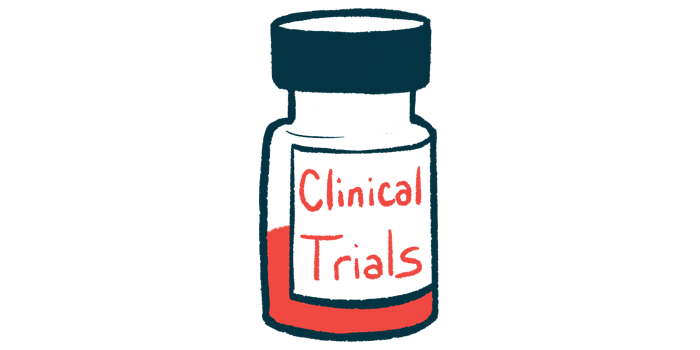Pamrevlumab fails at Phase 3 trial goals in ambulatory boys with DMD
No significant change in motor abilities with year of treatment in LELANTOS-2

Pamrevlumab, an antibody in FibroGen’s pipeline, did not improve motor skills in boys with Duchenne muscular dystrophy (DMD), ages 6 to 11, who could walk, according to top-line data from a Phase 3 study.
The LELANTOS-2 (NCT04632940) trial tested against a placebo pamrevlumab’s safety and how well it works when taken along with corticosteroids for up to one year. The antibody was found to be generally safe and well tolerated.
“We are deeply disappointed that the LELANTOS-2 study did not meet its primary endpoint,” Thane Wettig, interim CEO at FibroGen, said in a company press release.
Pamrevlumab also failed to meet its main goal in another Phase 3 study, called LELANTOS-1 (NCT04371666), testing the antibody in combination with corticosteroids in nonambulatory boys and men with DMD, ages 12 and older.
Boys, 6-11 and able to walk, were treated with pamrevlumab for one year
The global LELANTOS-2 study, which hit its enrollment target last year, randomly assigned 73 boys to an into-the-vein infusion of pamrevlumab at a dose of 35 mg/kg or to a placebo infusion every two weeks, along with Emflaza (deflazacort) or another equally potent oral corticosteroid.
Its primary outcome was a change in the North Star Ambulatory Assessment (NSAA) total score, commonly used to monitor motor abilities in ambulatory DMD patients, from the study’s start to one year.
The mean NSAA total score difference between patients given pamrevlumab and the placebo was 0.528 points, and this was not statistically significant.
Additional trial endpoints, such as the ability to climb stairs or to stand, run, or walk a distance of 10 meters (about 11 yards), and the time until loss of walking ability, also were not met.
Most side effects tied to the treatment — first occurring or worsening in boys on pamrevlumab — were mild or moderate, FibroGen reported without giving details. Serious treatment-related side effects were about three times as common with pamrevlumab as with the placebo (8.3% vs. 2.8%), it added.
The company plans to present full trial safety and efficacy data at an upcoming medical meeting, and it is determining next steps for its pamrevlumab program.
“We are committed to sharing all learnings from this trial with the Duchenne community and hope that there are insights that may help future efforts to develop treatments for this devastating disease,” Wettig said.
DMD causes gradual muscle weakness and wasting, most often starting in the hips and upper legs before affecting the arms, chest, and heart. It mainly affects boys.
Pamrevlumab is designed to block connective tissue growth factor (CTGF), a protein involved in tissue scarring (fibrosis). CTGF is abundant in muscles of people with DMD, and the abnormal muscle fibrosis that marks this disease causes muscles to weaken.







